This is the fourth of seven posts that recount last month’s Convening Great Lakes Culture Keepers (CGLCK) Institute at the Ziibiwing Center of Anishinabe Culture and Lifeways in Mt. Pleasant, Michigan, April 14-17, 2014. This four-day gathering of tribal librarians, archivists, and museum curators from Wisconsin, Minnesota, and Michigan, as well as staff and graduate students from the University of Wisconsin-Madison School of Library and Information Studies, was graciously funded by the Institute of Museum of Library Services. You can read more about the overview of the project here.
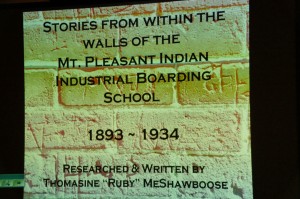
Tuesday evening, the second night of the conference, we gathered at Ziibiwing after dinner for a Reader’s Theater. The Reader’s Theater was held in the temporary exhibit space, where the current exhibit is “Debwewin/Truth: The Mount Pleasant Indian Industrial Boarding School Experience” (MPIIBS).
Katelyn had been signing people up to play parts the previous days, and handing out scripts. The full title of the work, written by Thomasine “Ruby” Holdier, is “Stories From Within the Walls of the Mount Pleasant Indian Industrial Boarding School: 1893-1934”.
First, a bit about the exhibit that surrounded the Reader’s Theatre. The temporary exhibit, which will also be travelling to other tribal communities, is a mixture of historic and current day photographs, with the history of the boarding school era explained through narrative, quotes, and images. This exhibit combines the hardships of the boarding school era with strength of the Saginaw Chippewa community today, showing the painful past, but also the resilient culture.
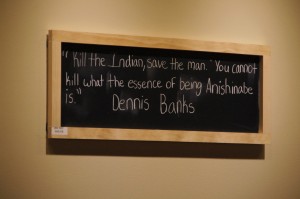
Another feature of the exhibit is direct quotes from both survivors of boarding school, and white administrators and government officials enforcing boarding school policies. These quotes are handwritten on individual chalkboards, starkly reminiscent of slates children may have used at the time. It is a very effective exhibit, and will be added to in the next few weeks with objects from Ziibiwing’s museum collections and original work of quilts to honor the students, passed, alive, and unaccounted for.
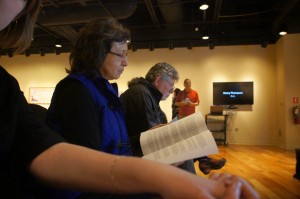
We came back to Ziibiwing after a full day of activity, looking forward to hearing the history of the MIIBS, and to see many of our fellow Culture Keepers transform into actors in the Reader’s Theater. Ray Cadotte burned sage to smudge as the actors assembled and sorted out roles. Shannon introduced the project and Ruby’s dedication to the project.
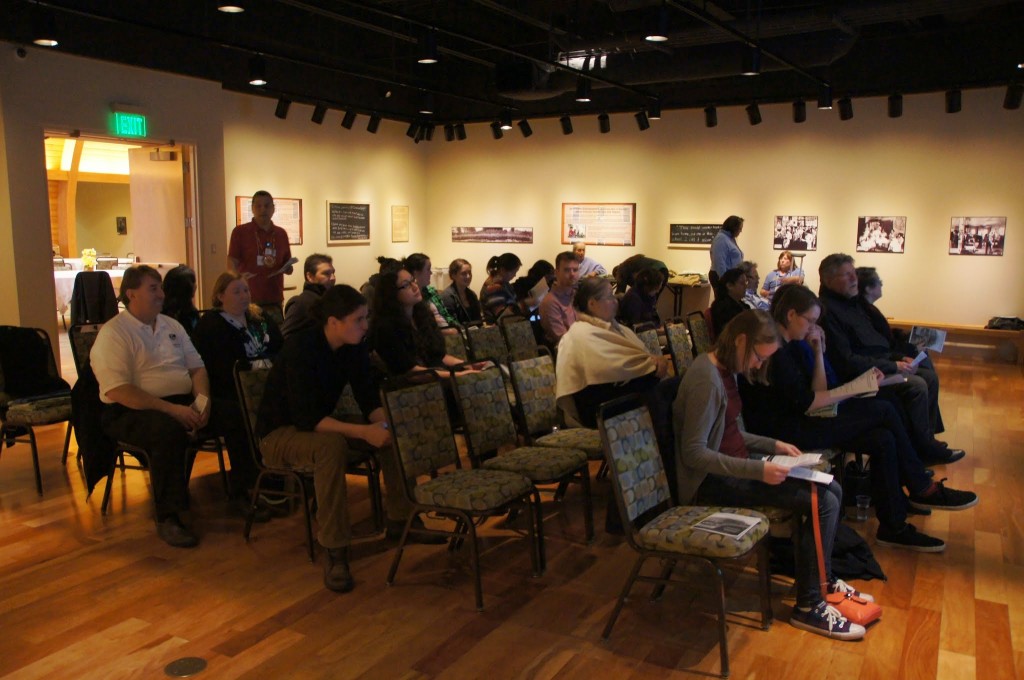
Gail Hollinger took the role of Maubes, the primary narrator. Other actors related stories of students and boarding school administrators, with pieces ranging from a young girl who repeatedly burned school buildings in protest, to two little boys who passed away when trying to run away from the school.
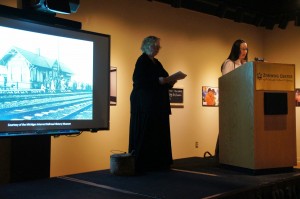
Elayne Silversmith performed the role of Amelia, a student who was abused and betrayed by boarding school practices. This character had many memorable parts throughout, and spoke the powerful final lines of the piece.
The entire reader’s theater performance was incredibly well done. The actors all did a wonderful job with their parts, and conveyed the emotion and importance of the work.
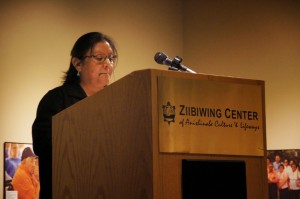
Ruby took a variety of primary sources found in her research at Ziibiwing, and combined them with storytelling to bring disconnected stories together. Similar to the museum exhibit, this Reader’s Theater tied many individual histories together to show the audience the community’s experience of loss, and difficult recovery and remembrance. Following the performance, Ruby spoke about her experience putting the Reader’s Theater together — and she received a standing ovation from us all for her amazing work.
This was a special night to be a part of at Ziibiwing, and a very important element of the Convening Great Lakes Culture Keepers Institute. Miigwech to the creator of the Reader’s Theater Ruby, Ziibiwing, and all the actors!
Stay tuned for the next post!
-Lotus Norton-Wisla
